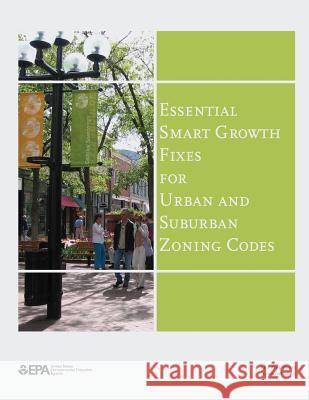Essential Smart Growth Fixes for Urban and Suburban Zoning Codes » książka
Essential Smart Growth Fixes for Urban and Suburban Zoning Codes
ISBN-13: 9781514380697 / Angielski / Miękka / 2015 / 48 str.
Essential Smart Growth Fixes for Urban and Suburban Zoning Codes
ISBN-13: 9781514380697 / Angielski / Miękka / 2015 / 48 str.
(netto: 69,68 VAT: 5%)
Najniższa cena z 30 dni: 68,58 zł
ok. 13-18 dni roboczych.
Darmowa dostawa!
Across the country, state and local governments are searching for ways to create vibrant communities that attract jobs, foster economic development, and are attractive places for people to live, work, and play. Increasingly, these governments are seeking more cost-effective strategies to install or maintain infrastructure, protect natural resources and the environment, and reduce greenhouse gas emissions. What many are discovering is that their own land development codes and ordinances are often getting in the way of achieving these goals. Fortunately, there is interest in tackling these challenges. As the nation's demographics change, markets shift, and interest in climate change, energy efficiency, public health, and natural resource protection expands, Americans have a real opportunity to create more environmentally sustainable communities. To address these issues, many local governments want to modify or replace their codes and ordinances so that future development and redevelopment will focus on creating complete neighborhoods-places where residents can walk to jobs and services, where choices exist for housing and transportation, where open space is preserved, and where climate change mitigation goals can be realized. Many local governments, however, lack the resources or expertise to make the specific regulatory changes that will create more sustainable communities. And for many, model codes or ordinances can be too general for practical use or are often designed to be adopted wholesale, which many communities are unprepared to do. The purpose of this document is to identify the most common code and ordinance barriers communities face and to suggest actions communities could take to improve their land development regulations.











